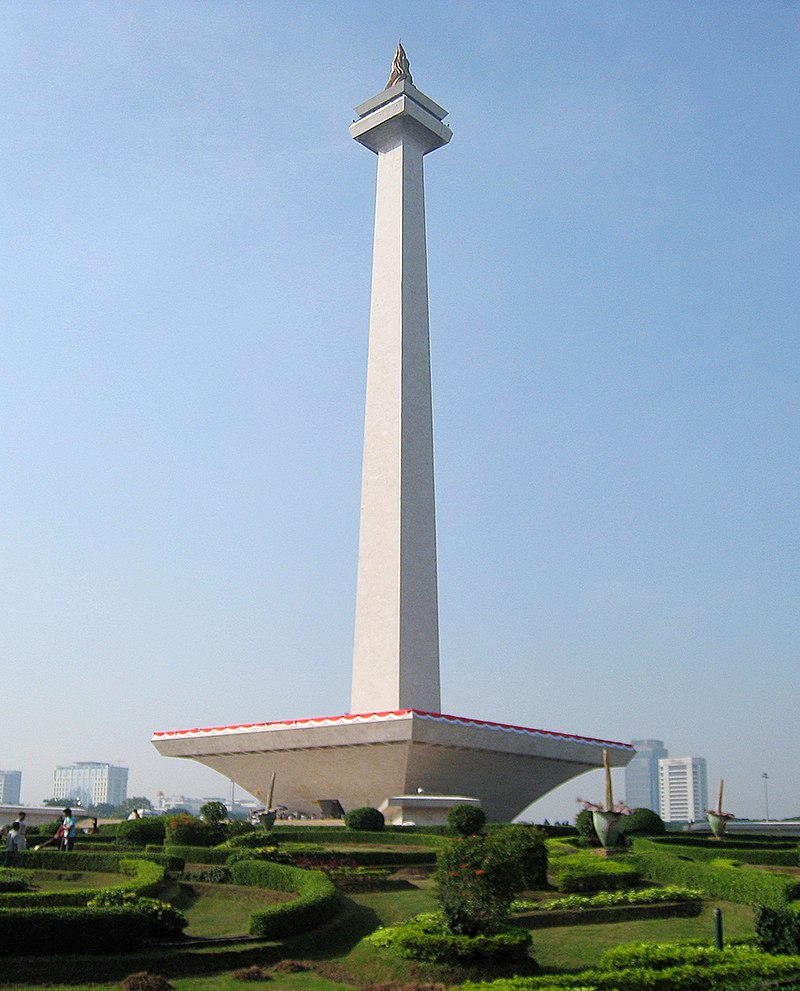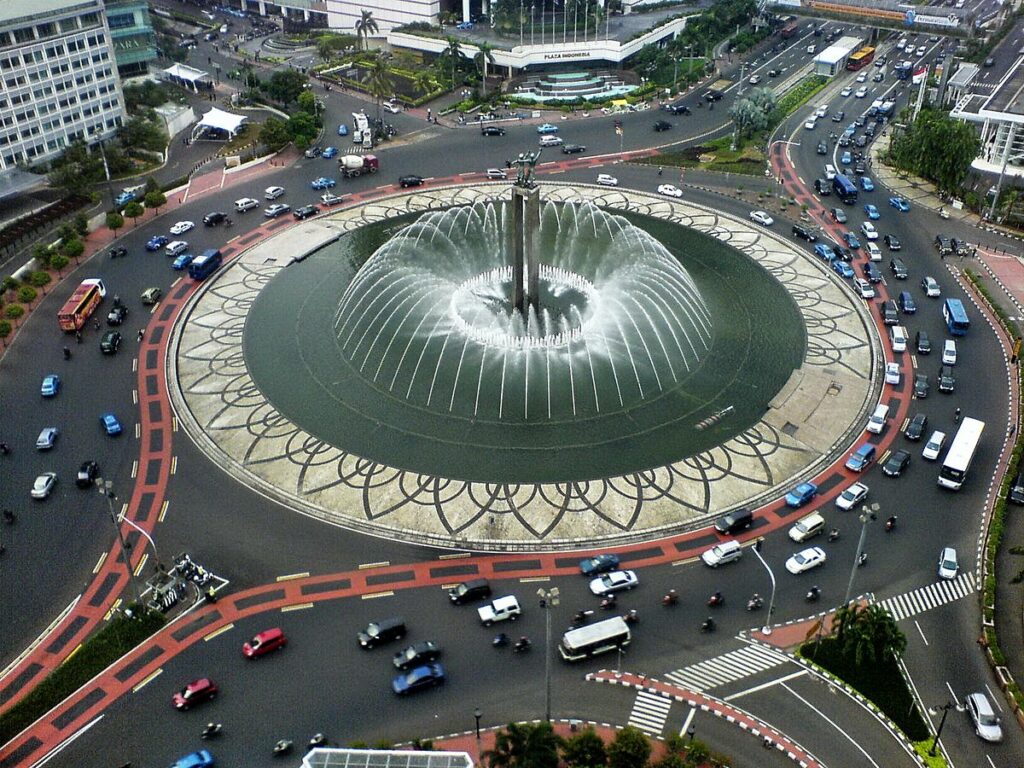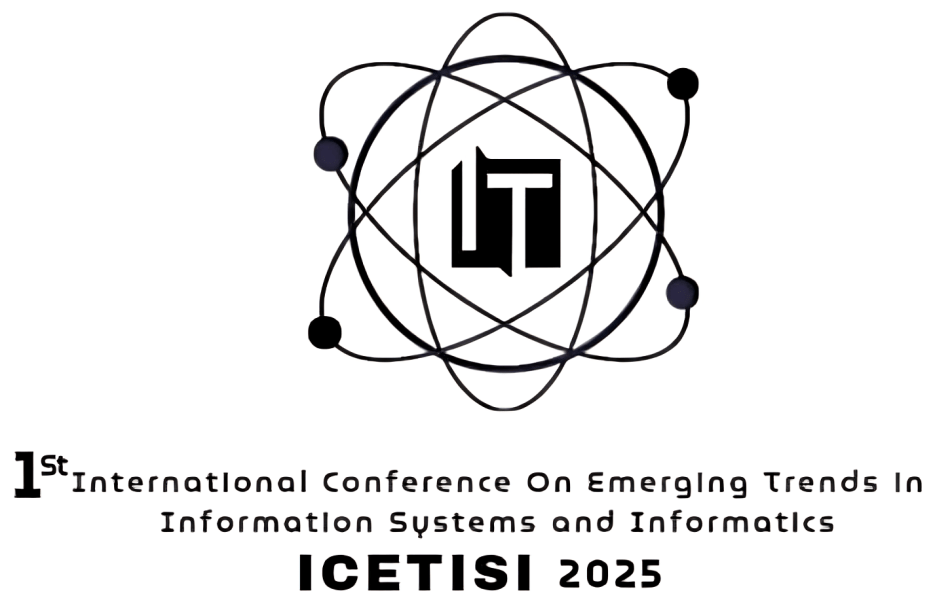Landmarks near Jakarta
{ ICETISI 2025 }
Jakarta houses a variety of grand national landmarks. Out of the numerous landmarks present, the following are the most iconic and renowned ones in the city.
Monumen Nasional (Monas), Jakarta
The National Monument, more commonly known as Monas, is a prominent symbol of Indonesian pride, located in Gambir, Central Jakarta. Initiated by the country’s first president, Ir. Soekarno, the monument commemorates the struggle of the Indonesian people for independence. Rising to a height of 132 meters, this imposing structure is topped with a layer of gold forming a flame, symbolizing the fiery spirit of the nation’s fight for freedom.
Construction of this iconic Jakarta landmark began on August 17, 1961, and it was opened to the public on July 12, 1975. Since then, Monas has stood as one of the definitive symbols of Jakarta. It serves not only as a historical monument but also as a cultural and recreational space, where visitors can explore a museum dedicated to Indonesia’s independence struggle and enjoy panoramic city views from its observation deck.

Bundaran HI & Welcome Monument, Jakarta
Location: Intersection of M.H. Thamrin Road with Jalan Imam Bonjol, Jalan Sutan Syahrir, and Jalan Kebon Kacang, Jakarta.
Jakarta is dotted with a myriad of iconic landmarks, and among them, the Welcome Monument at Hotel Indonesia Roundabout stands out prominently. Commonly referred to as Bundaran HI, this landmark is situated at a key intersection along M.H. Thamrin Boulevard, where it crosses Jalan Imam Bonjol, Jalan Sutan Syahrir, and Jalan Kebon Kacang.
The Welcome Monument was constructed in 1962, specifically to greet state guests during the Asian Games IV held in Jakarta. The landmark features a statue that is now synonymous with Jakarta’s identity, celebrated for its gleaming golden flame which artistically symbolizes the warm and open spirit of Indonesia. This monumental area not only serves as a pivotal point of social gatherings and national celebrations but also enhances the urban aesthetic, marking it as a central point of interest in the city’s bustling environment.

Istiqlal Mosque
Location: Jl. Taman Wijaya Kusuma, Ps. Baru, Sawah Besar District, Central Jakarta, Special Capital Region of Jakarta 10710
The Istiqlal Mosque, also known as Masjid Istiqlal, is Indonesia’s national mosque, located in Jakarta. It is the largest mosque in Southeast Asia and one of the largest in the world in terms of capacity, accommodating up to 200,000 worshippers. The mosque was designed to commemorate Indonesia’s independence, as “Istiqlal” means “independence” in Arabic. This architectural marvel, which was inaugurated in 1978, stands not only as a spiritual center but also as a symbol of pride, reflecting Indonesia’s struggle for freedom and its cultural identity.
Istiqlal Mosque, situated in Northeastern Medan Merdeka Field with the National Monument at its center, has long stood as a symbol of pride for the Indonesian people. The mosque, towering at 132 meters, was initiated by the first president, Ir. Soekarno, to commemorate the resistance and efforts of the Indonesian people in achieving independence.
Construction of this iconic Jakarta landmark commenced on August 17, 1961, and opened to the public on July 12, 1975. Since then, Istiqlal Mosque has become one of the iconic symbols of Jakarta. This landmark is particularly notable for its gold-coated flame at the peak, adding to its grandeur.

